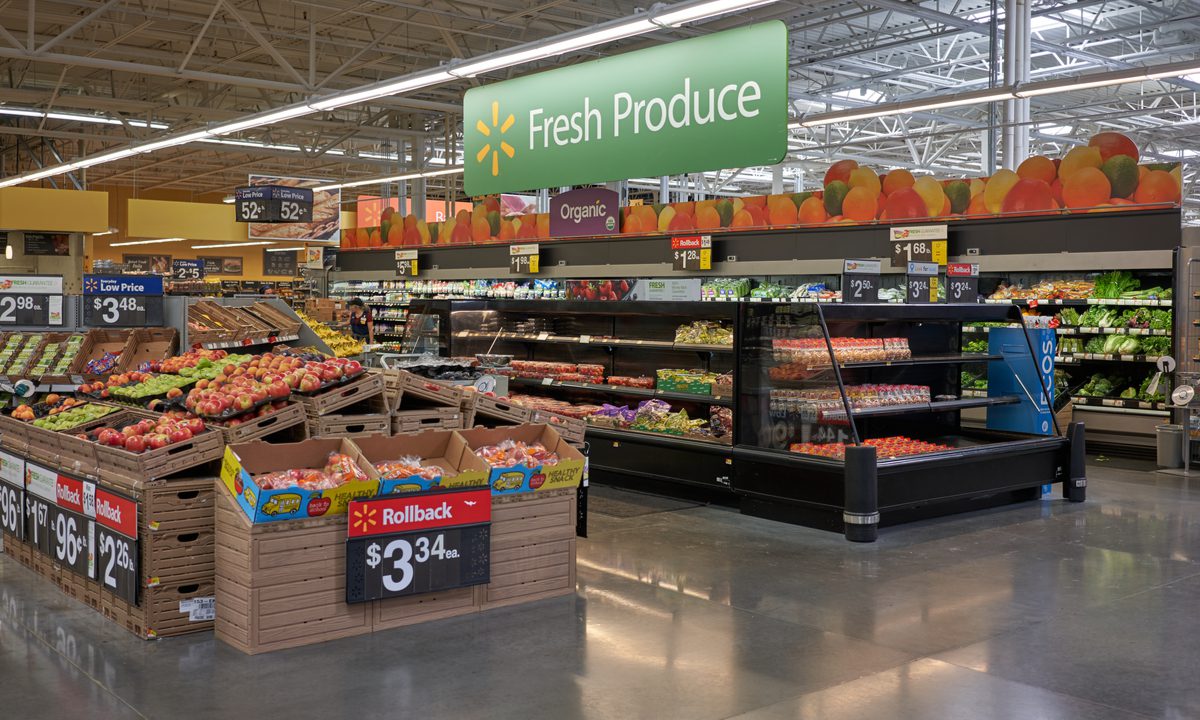Walmart: Grocery Sales Grow Double Digits as Consumers Embrace Private-Label Brands

For Walmart, fiscal first-quarter earnings got a lift as consumers flocked to the commerce giant to stock the fridge — and pivoted to less-expensive, private-label goods.
The retailer said in its earnings results and supplementals Thursday (May 18) that grocery comparable sales grew by “low double-digit” percentage points, and it has seen more spending from higher-income households. It’s not just inflation driving the comps, as Walmart also stated in its earnings materials that the food “units” also increased year on year.
The company also said that its private brand penetration increased by 1.1% year on year.
Walmart’s results come against a backdrop in which PYMNTS data showed that most consumers have been pulling back their spending on non-essential items and more than a third of individuals have been opting to buy cheaper grocery items.
U.S. same-store sales were up 7.4%, which helped drive net sales up 7.6% to $152.3 billion. In contrast to Target’s earnings results released Wednesday (May 17), which saw a dip in online sales, Walmart said its eCommerce sales were up 26%, driven by omnichannel, including pickup and delivery.
Sam’s Club comp sales, without fuel, gained 7% year on year in the fiscal first quarter, led by food and consumables. The company also noted that Scan and Go penetration increased by 6% year on year.
CEO Doug McMillon said on a conference call with analysts the company continues “to gain market share in the grocery category, including with higher income and younger shoppers,” adding that it “saw good growth in membership income in both businesses at Sam’s Club. U.S. member count and Walmart+ member penetration hit all-time highs in the quarter. Our growth is now being driven by convenience. In addition to price, we see it across formats and income and age cohorts.”
Chief Financial Officer John Rainey said on the call that “at the headline level, consumer spending has proven resilient, but below the surface,” consumers are showing signs of a spending shift. In the first quarter, there was a 3.6% shift in the U.S. away from general merchandise to grocery and health and wellness categories (in one bit of evidence, management noted on the call that private-label beef brisket tonnage sold is up double digits year on year as the average selling prices are down double digits over the same time frame).
“In addition to the persistence of inflation and food and consumables, customers were also impacted by a reduction of SNAP benefits and lower tax refunds,” he said. “These impacts were partially offset by higher spending tied to an increase in the cost-of-living adjustment for Social Security benefits.”
As a result, per the company’s release, general merchandise sales slid by low single-digit percentage points in the quarter, as measured year on year.
McMillon also noted on the call that international sales grew nearly 13% as measured in constant currency, with double-digit top-line growth in China, as traffic to the company’s stores there increased amid the re-opening of the economy and China’s Lunar New Year season.
Membership and Marketplace Traction
Management also noted on the conference call that its “seller counts” — merchants leveraging the company’s marketplace — are up more than 40% year on year, and the number using Walmart’s fulfillment services has more than doubled.
“We’re adding higher-profile in-demand brands that our customers are searching for but not typically distributed at Walmart,” said Rainey, who noted later in the call that “Sam’s Club member counts have had a multi-year run of robust growth with another record high achieved in Q1. Member counts have grown nearly 30% over the past three years, and we’re increasingly attracting greater numbers of millennials and Gen Z … nearly 50% of our Walmart+ members are coming from the online pickup and delivery channel. Members spend more than non-members.”
For all PYMNTS retail coverage, subscribe to the daily Retail Newsletter.

